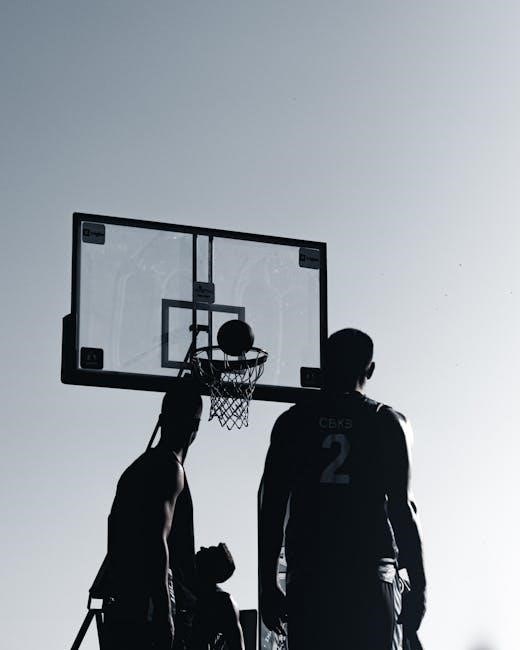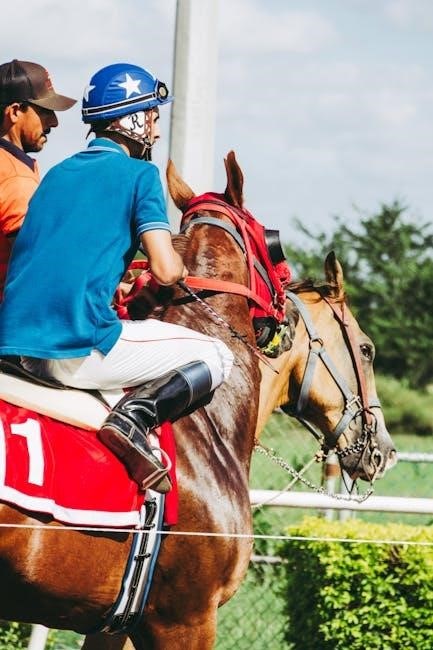Finding the right MLB jersey size can be tricky! This guide helps you navigate the nuances of sizing, ensuring a comfortable and stylish fit․ We’ll cover different jersey types, measurements, and size charts to help you choose․
Types of MLB Jerseys
MLB jerseys come in various types, including authentic and replica․ Authentic jerseys mirror what players wear, featuring premium materials․ Replica jerseys offer a more affordable option with similar aesthetics․
Authentic Jerseys
Authentic MLB jerseys represent the pinnacle of baseball apparel, designed to replicate what professional players wear on the field․ These jerseys are crafted with high-quality, durable materials, typically featuring a double-knit polyester fabric for enhanced performance and longevity․ Expect embroidered graphics and authentic paneling that precisely mirror the on-field jerseys․
Authentic jerseys often utilize a numerical sizing system (e․g․, 40-60), rather than the standard small, medium, large designations․ This sizing provides a more precise fit, catering to athletes’ specific measurements․ Due to their athletic cut and materials, authentic jerseys are designed for performance․
Consider that authentic jerseys generally fit larger than typical t-shirts to allow for ease of movement․ Because of the premium materials and construction, these jerseys come at a higher price point․
Replica Jerseys
Replica MLB jerseys offer a more affordable alternative to authentic versions, providing fans with a way to support their favorite teams and players without the higher price tag․ While resembling authentic jerseys in appearance, replica jerseys are typically made with lighter, less expensive materials․
These jerseys often utilize standard sizing (S, M, L, XL, etc․), making them easier to select based on typical clothing sizes․ The graphics on replica jerseys are usually heat-pressed or screen-printed, rather than embroidered, which contributes to the lower cost․
Replica jerseys generally offer a looser, more relaxed fit compared to authentic jerseys, prioritizing comfort over performance․ They’re an excellent choice for casual wear and everyday support of your favorite team․ Remember to consult size charts, as sizing may vary slightly between brands․

Measuring Yourself for an MLB Jersey
Accurate measurements are crucial for finding the right MLB jersey fit․ This section guides you through measuring your chest, waist, and hips to select the correct size using charts․
Chest Measurement
To obtain an accurate chest measurement for your MLB jersey, start by standing straight with your arms relaxed naturally at your sides․ Ensure the measuring tape is horizontal and parallel to the ground․ Wrap the tape measure around the fullest part of your chest, usually across your shoulder blades and under your arms․ It’s important to keep the tape snug but not too tight, allowing for comfortable movement․
Take a normal breath and have someone else read the measurement, or carefully look down without changing your posture․ This measurement will be the primary determinant for your jersey size, especially for men’s jerseys․ Refer to the size charts, and if you are between sizes, consider if you will be layering clothes underneath․
Waist Measurement
To accurately measure your waist for finding the right MLB jersey size, locate your natural waistline․ This is typically the narrowest part of your torso, often where your body bends side to side, and usually sits slightly above your navel․ Stand straight and wrap the measuring tape around your waist at this point, keeping the tape horizontal and parallel to the floor․ Ensure the tape is snug but comfortably loose, allowing for some breathing room․
Avoid pulling the tape too tight, as this can result in an inaccurate measurement․ Refer to the specific size chart for the jersey you intend to purchase, as waist measurements can help determine the best fit, especially for women’s and youth jerseys․ This measurement, along with your chest measurement, will guide you․
Hips Measurement
Measuring your hips accurately is crucial for determining the right MLB jersey size, particularly for women’s and youth fits, but it also ensures comfort․ Stand with your heels together and measure around the fullest part of your hips, keeping the measuring tape level and parallel to the floor․ Ensure that the tape measure sits comfortably and isn’t pulled too tightly․
This measurement is most useful for fitted jersey styles to ensure a proper fit through the hips and seat․ Compare your hip measurement to the size chart provided by the manufacturer (Nike, Majestic, etc․) for the specific jersey you are interested in purchasing․ A correct hip measurement prevents the jersey from being too tight or restrictive․

MLB Jersey Size Charts
MLB jersey sizes vary․ Consult the size charts for men, women, and youth․ These charts provide measurements for chest, waist, and hips to help you determine the best fit․
Men’s Size Chart
The men’s MLB jersey size chart uses numerical sizes (e․g․, 40-60) for authentic jerseys and standard sizes (S-4XL) for replicas․ To find your size, measure your chest at the fullest part, keeping the tape horizontal․ If you’re between sizes, consider your desired fit—size down for a tighter fit or up for a looser one․
Nike’s size chart uses chest measurements in inches․ For example, a size Small fits a chest of 35-37 inches, while a Medium fits 37․5-41 inches․ Remember to account for layering if you plan to wear clothing underneath your jersey․ Refer to the specific brand’s size chart, as measurements may vary slightly․
Women’s Size Chart
The women’s MLB jersey size chart typically uses standard sizes like XS to 2XL․ To determine your size, measure your bust at the fullest part and your waist at the narrowest part․ Keep the measuring tape horizontal for accurate results; Compare your measurements to the chart provided by the specific brand, as sizing can vary․
If you’re between sizes, consider whether you prefer a tighter or looser fit․ For a more relaxed fit, especially if layering, opt for the larger size․ Some charts may also include hip measurements for a more precise fit․ Always consult the brand’s official size chart for the most accurate guidance․
Youth Size Chart
Finding the right MLB jersey size for youth requires considering both age and measurements․ Youth size charts typically use sizes like S, M, L, and XL, corresponding to approximate age ranges․ However, it’s crucial to measure chest size to ensure a proper fit, as children of the same age can vary in size․
Measure around the fullest part of the chest, keeping the tape horizontal․ Compare this measurement to the size chart provided by the jersey brand․ If the child is between sizes or growing rapidly, consider sizing up to allow for growth and comfortable movement․ Always refer to the specific brand’s size chart for accuracy․

Fit Considerations
Beyond measurements, consider how you’ll wear your jersey․ Think about layering underneath or if you prefer a loose or tight fit․ These factors influence the ideal jersey size for you․
Layering
When selecting your MLB jersey size, layering is a key consideration, especially if you plan on wearing it during cooler weather or at games during the colder months․ If you intend to wear your jersey over a t-shirt, hoodie, or other layers, it’s generally recommended to order a size up from your usual size․ This allows for comfortable movement and prevents the jersey from feeling too tight or restrictive․
Consider the thickness of the layers you anticipate wearing․ A thin t-shirt won’t impact the fit as much as a bulky sweatshirt․ By accounting for layering, you ensure that your jersey not only looks great but also provides the comfort and flexibility you need to enjoy the game or show off your team spirit in any weather conditions․
Desired Fit (Loose vs․ Tight)
Personal preference plays a significant role in choosing the right MLB jersey size․ Do you prefer a looser, more relaxed fit, or a tighter, more fitted look? Authentic jerseys often have an athletic cut, closer to what players wear, which may feel more fitted․ Replica jerseys tend to have a more generous cut, offering a looser fit․
If you prefer a looser fit, consider sizing up, especially if you’re between sizes on the size chart․ For those who prefer a tighter fit, sticking with your measured size or even sizing down might be preferable․ Consider how you intend to wear the jersey – for casual wear, a looser fit might be more comfortable, while for more athletic activities, a tighter fit might be preferred․

Authenticity Checks
Ensuring your MLB jersey is authentic involves checking logo quality, tags, and labels․ Authentic jerseys have crisp, clear logos and official tags․ Be wary of inconsistencies, misspellings, or misaligned elements․
Logo Quality
The logo is a key indicator of an MLB jersey’s authenticity․ Authentic jerseys feature logos that are crisp, clear, and precisely stitched․ Examine the logo closely for any signs of poor workmanship, such as frayed edges, uneven stitching, or misaligned elements․ The colors should be vibrant and consistent with the team’s official colors․ Be wary of logos that appear faded, distorted, or improperly sized․
Genuine MLB jerseys use high-quality materials and meticulous manufacturing processes to ensure that the logo is accurately reproduced․ Counterfeit jerseys often cut corners in production, resulting in noticeable flaws in the logo’s appearance․ Inconsistencies in the logo’s placement, size, or color can be red flags, suggesting that the jersey is not authentic․ Always compare the logo on the jersey with official team merchandise to verify its accuracy․
Tags and Labels
Authentic MLB jerseys come with official tags and labels that provide information about the jersey’s manufacturer, materials, and care instructions․ These tags are typically securely attached to the jersey and feature clear, legible printing․ Check for any misspellings, grammatical errors, or inconsistencies in the information provided on the tags․ Counterfeit jerseys often have poorly printed or missing tags, or tags that contain inaccurate information․
The labels on an authentic MLB jersey should also include the official MLB logo and licensing information․ Verify that the labels are properly sewn into the jersey and that the stitching is clean and secure․ Look for any signs of tampering or alteration, such as loose threads or uneven seams․ Authentic jerseys typically have a hologram sticker or other security features to prevent counterfeiting․ Examine the tags and labels carefully to ensure that they match the standards for official MLB merchandise․